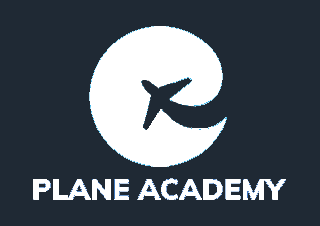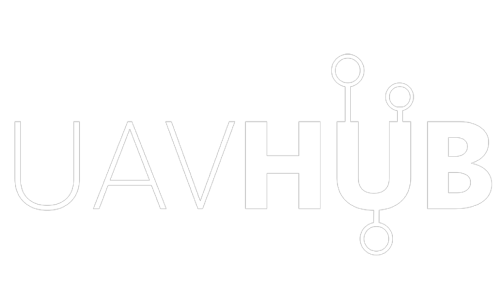THE NUMBER OF PILOT LICENCES ISSUED FALLS TO THE LOWEST NUMBER IN A DECADE!
Our partners at FTA have recently published this article and allowed us to share it with you:
Data recently supplied by the UK Civil Aviation Authority has confirmed that the number of people who were issued a commercial pilot’s licence in 2020, was 71% lower, just 262, compared with 906 in 2011. The picture for PPL licenses was also very low, falling to almost half the 2011 total.
To put this into context, as a nation we saw half a million students start a university degree in the same year, over 410,000 of whom were from the UK.
The blame cannot be attributed to the pandemic alone. Whilst the number of PPLs issued has changed over the years, it has been rising. The number of people completing a commercial pilot’s license has actually been tumbling, and more dramatically so over the last 5 years.
Has the industry lost its luster? Hannah is an airline pilot for Lauda, she’s worked throughout the pandemic and offers advice to those undecided:
“I love my job…There are lots of elements of the training that can appear scary and you might think I can’t do it. But don’t let that be a factor, you will be trained by people who have been there and done it and it’s their job to help you get where you want to be. As long as you know you want it and you are willing to put the work in, there’s nothing stopping you!”
There are various opinions over whether now is the best time to embark on your pilot training. However, with the travel industry set to bounce back over the next couple of years (and pilot training taking the same time), many argue that there is no better time.
A significant economic boom, greater than that post-WWII is predicted for the economy and this optimism seems to be shared by training pilots. The number of pilots completing their training in 2021, is already on target to climb higher than pre-pandemic by the end of the year.
The major aircraft manufacturers Boeing and Airbus have continued to share positive predictions of the industry in spite of the pandemic. Boeing’s expectation is that passenger travel will grow at a rate of 4% per year over the next 2-3 years, and along with it the demand for flight crew and engineers. Tim Myers, president of Boeing Capital Corporation, said: “Despite the unprecedented impacts of COVID-19 on the global aerospace industry, there generally continues to be liquidity in the market for our customers, and we expect it to further improve as travel begins to rebound.”
Indeed, Guillaume Faur, CEO for Airbus said: “The aviation sector is beginning to recover from the COVID-19 crisis”. The company also issued a statement on 21 May this year, his company confirmed the following: “Airbus continues to expect the commercial aircraft market to recover to pre-COVID levels between 2023 and 2025, led by the single-aisle segment.”
In a press statement in June this year Ryanair said that with the opening of new bases, including Stockholm, Zagreb and other airports for this winter, “opportunities have been created for up to 1,000 cabin crew”. They confirmed that they are doubling seat capacity across Europe to 1.3 million a week (2 June 2021). The airline hopes to fly 4 million passengers and believes that could increase to between 7 million and 9 million next month.*
No credible ATO will sell a course with the guarantee of a job. Just as it is in further education and higher education – students should always be trained to be industry-ready and make the most of whole market possibilities. This is what Sussex-based flight school, FTA Global pride themselves in. Not everyone feels the calling of the airlines, and many want to gain experience and hours working for different companies or areas such as business jets, instructing, or ferry flying.
Tikhon choose to enroll on FTA’s integrated program amidst the pandemic in June 2020, he explains how he feels about his decision:
“Enrolling on to the integrated program has been one of the best decisions of my life. The whole process went and is still going so smoothly. It is important to mention that my cohort joined at one of the most challenging times in the industry due to Covid, and FTA has been a fantastic help and guide through this period. Starting the flight line only recently, I have already managed to go solo after my 12th hour which is just proof of the excellent instructing that goes on at FTA. As I am spending more time at FTA, it is beginning to feel like a big family where everyone knows everyone. It really feels like you can talk to anyone at the school and they will help you as much as they can. Overall, I don’t think I could have chosen a better flight school that would have met my needs to this extent. Thank you FTA!
FTA’s next integrated intake is September 2021. It’s the most popular time in the year to enroll with students taking a short break from studies over the summer. Places are limited and those enrolled are already getting a head start on their training with access to Padpilot materials on their FTA iPads.
It’s important to also note that FTA is one of the few UK-based ATOs to secure approval from both the CAA and EASA. This means that they are able to offer training for both a CAA and EASA license from their base in Brighton. It also means that students can decide whether they want to pursue an EASA, CAA, or dual license.
Sources: Airbus, *Irish Times
How to become an Airline Pilot
How to become an airline pilot? The concept of flight has fascinated humankind for centuries, so it is no surprise that the thought of becoming a pilot
has crossed many a mind. Global demand for air travel has rapidly increased in recent years, creating new job opportunities in the aviation industry. With airlines launching major pilot recruitment drives, it appears to be easier than ever to pursue a career in the air. However, the increased variety of training programmes might make it difficult to identify the most suitable route to the flight deck. The following guide visualises the different training options for aspiring pilots and covers some key points to consider before making your dream career a reality.
Researching your career
When starting your research into becoming a pilot, the first question you should ask yourself is: do I want to pursue a career as a pilot or do I simply enjoy flying leisurely? The thought of flying for a living may appear to be particularly attractive, but does it suit your current lifestyle? Will this lifestyle still appeal to you in 10 or20 years time? Working long, unsociable hours on a busy roster is very common in civil aviation and a military career usually has a mandatory service period of 10 years minimum. Whilst many airlines offer pilots the option to work part-time, the first few years of your flying career would commonly require full-time commitment. Also, do you have a back-up plan in case of medical or employment difficulties? Stringent regulations and ever-changing industry requirements may result in low levels of job security, particularly in an economic downturn. Securing financing for initial flight training is, however, the greatest obstacle for most aspiring airline pilots. Few airlines offer fully sponsored cadet training programmes and airline partnered courses commonly require a substantial financial contribution from the trainee. FTOs (Flight Training Organisations) may offer financing options through designated lenders. There are, however, alternative options for those unable or unwilling to secure a loan for their preferred training programme. Bursaries, grants and sponsorships are available through selected schemes, e.g. iFly, the Air League and the Amy Johnson Initiative. Alternatively, young aspiring pilots may choose to join the Air Cadets or a University Air Squadron. A professional flying career is, however, certainly not restricted to young graduates only. In fact, many airline pilots have a background in non-aviation related fields and some have even enjoyed successful careers in other roles, be it to fund their flight training. Also, airlines are increasingly looking for well-rounded, highly skilled and motivated individuals. Previous working experience and/or academic degrees may prove to be particularly advantageous when facing high levels of competition in search for that sought-after first flying job. Some airlines offer financial support or internal training schemes to employees who would like to pursue a flying career. Military pilots leaving the forces are still actively recruited into civil aviation and will usually be offered the opportunity to retrain as civilian pilots through sponsored schemes.
The options
Once you have set your sights on becoming a pilot, you will need to research the various eligibility criteria. The first step is to look into the medical requirements. While strict health and fitness requirements might rule out a career in the military, you could still be eligible to obtain a Class 1 medical certificate, allowing you to pursue a career in civil aviation. Conversely, if you do not meet the criteria for a Class 1 medical, you might be able to obtain a Class 2 medical –allowing you to hold a PPL- or pass the health assessment for the various national pilot licences. Next, you will need to start thinking about your long term goal: do I have a specific future employer in mind? The current market climate has encouraged airlines to set up their own training programmes and others recruit exclusively from specific FTOs. Should a designated airline programme appeal to you, this would be the time to look into additional requirements set out by your potential future employer. These may include educational qualifications, nationality/residency and age limits. Some programmes might require upfront payment for the training, others have the benefit of guaranteed employment upon graduation, but come with a financial bond for a number of years. Also, do you understand the privileges of each licence type? MPL courses are usually more cost effective, but might pose restrictions or require additional training later in your career.
You might decide to keep your options open and enrol on a non-airline specific fATPL course, the so-called “white-tail” route. This type of flight training is usually self-funded and requires upfront payment of the course fees. Employment after graduation is not guaranteed, but airlines tend to headhunt cadets whilst still in training. If you decide to train as a “white-tail” cadet, you will need to start your research with your chosen FTO: what are their employment statistics? How large is the graduate holding pool? Who are their airline partners? Even if you do not have a specific employer in mind, it might be useful to look into the recruitment criteria of your FTO’s airline partners. Not meeting certain requirements might significantly reduce your chances of success in the job market. Also, consider setting aside some funds for your Type Rating. Some airline pay for Type Rating training, but in most cases you will be required to cover the costs, which may be in excess of £30,000.
The final route to the airline flight deck is most suitable for aspiring pilots who either cannot attend a full-time integrated fATPL course or are unable to raise the funds for their training course outright. This so-called “Modular” route gives trainees the flexibility to fit flight training around their lifestyle and allows for more freedom in their choice of FTOs. Due to licencing requirements, graduates from modular courses tend to finish their training with more flying hours than their integrated fATPL counterparts. Whilst modular flight training used to be a common route to the right hand seat, the popularity of this option has slightly declined in recent years. Certain airlines tend to favour integrated fATPL and MPL cadets over modular training graduates. However, the modular training route is certainly not a less appropriate choice for commercial pilot training.
The application
Having carefully considered all your options, it is time to apply for the training programme of your choice. The first stage of the process usually involves completing an online form or questionnaire. If you meet all eligibility criteria, you will probably be invited to take part in the selection process for your chosen programme. Methods used for pilot assessment vary from a simple check of your qualifications and documentation to multiple stage competency-based, motivational and technical interviews, simulator checks, group exercises and extensive psychometric testing. Applicants for airline sponsored and partnered courses are usually required to attend several assessment days, especially if enrolment on the chosen course guarantees employment upon graduation. Skills assessment for “white-tail” and modular courses is usually conducted in one day, with the more advanced stages of the selection process taking place post flight training and prior to commencing Type Rating training with a specific airline.
Strict eligibility criteria, the limited amount of spaces available and fierce competition might result in an unsuccessful first attempt at the selection process for your preferred choice of flight training programme. However, this does not necessarily disqualify you for a career in aviation. Unsuccessful applicants may have the opportunity to re-apply after a certain time or be offered a place on an alternative training course.
10 Things to do before starting flight school
10 Things to do before starting flight school. There are actually no academic qualifications required to be a pilot, although some airlines may have entry requirements, specific flight schools do not tend to have academic requirements. Pilot selection typically involves an online application, if accepted and invited for an assessment. You will be expected to complete aptitude, math, physics, verbal and numerical reasoning among other tests depending on the flight school. You will certainly be asked to complete an interview and group exercises as well as simulator assessment in some cases. Like any job interview, preparation is the very important, it is very apparent which candidates study and prepares and who is just coming in a “winging” it, pardon the pun.
So here are the top 10 items to prepare for in no particular order.
1) Why do you want to be a pilot?
This is one question that will almost certainly be asked. Also another similar question that will follow is: Why do you want to work for us? Or why do you want to be a pilot for (airline) There is an extensive question bank of interview questions that you can download in our assessment and interview preparation area.
2) Know the job – are you aware what the job entails.
Many people dream of becoming an airline pilot, But do you actually know what the job entails? Its worth going to flyer shows or if a friend of a friend knows a pilot, speak to them. Think about how you would answer questions certain questions such as, “Can you describe a typical day as a pilot?” or “What do you know about the job that makes you want to be pilot?”
Most flight school interviews will ask, can you describe briefly the stages of training at the school? For example, 6 months ground school, 14 ATPL exams, 5 months flying either Arizona or New Zealand or else where, followed by another 4-6 months completing the more complex flying like the instrument rating. The las stage is a 2 week MCC/JOC course.
3) Industry experience.
There are lots of jobs that you may not think of that you can be apart of at airports, either part-time, full-time or as a volunteer for work experience. Airlines require thousands of staff to support their aircraft. Handling Agents such as Menzies employ staff who take responsibility for aircraft on the ground. Although busy a job as a dispatcher could be perfect for a wannabe airline pilot. Even local airfields have some sort of work available, like a receptionist at your local flying club. This could really demonstrate your motivation to be a pilot and another tick in the box in an interview.
4) As mentioned above, speak to a current pilot.
Every single pilot I know loves to talk about flying and the job. Perhaps on your next flight go and ask to visit the flight deck at the end if you can, make sure you have a couple of questions at hand to ask. Write down everything they say, and if you’re able to, ask them what they like about the job and even one thing that they find challenging or dislike. At an interview you might mention you spoke to this person, again this will demonstrate your interest in the profession and preparation.
5) Research
Complete all the points mentioned above for thorough preparation, Know every stage of selection, speak to people who have been through the process before you. Try and find at least 2-3 different people as each one will hae another bit of information the other had forgotten or failed to mention. Find out every last detail!
If you cant find anyone to talk to go on twitter or instagram and search for the hashtag #CAEOAA #CTC #flighttraining and tweet the students that are currently in training, try and ask as many questions without being annoying. Then as mentioned above, everything that those people have said break down into bullet points and go research. How long has the flight school been around, whats their history, what aircraft do they have, what locations do they operate out of, what are their partner airlines, Just everything! Its much better to be over prepared than under prepared!
6) Practise
We have a lot of practice material for you to download that you can find at the end of this article but in essence, practice your maths and physics at least 1-2 months prior to your interview. It certainly helps familiarising yourself with the testing process and fine tuning your skills.
7) Double and Tripple check your application
Find a professional or someone in the industry (a pilot would be ideal) to read your application. Dont ask your Mum or Dad or Family member because everything is great to them. You need someone to be critical (but not too critical) to vet your appilication and to pick up any spelling mistakes and grammar. Im sure theres many in this article 🙂
8) Practice
Practise your interview, you dont have to use a pen, I used my phone’s voice recorder and wrote out many answers to complex questions to memorise and listen to. You’ll be amazed how natural you’ll be in the interview and how much more confident you’ll be if you already have an answer prepared. We provide an extensive question bank you can prepare your answers for at the bottom of this article. Practise answering questions out loud. Practice pretty much everywhere in the shower, in your car and every spare minute. Thats why I recorded myself on my phone so I can listen to it on the go. Also you can give a friend or someone you know a list of questions, with your answers written out if that helps as well, ask for a mock interview and then ask for a debrief.
9) What to wear?
Guys – Shirt and tie is a must! Polish your shoes, and dont leave your top button undone, make sure your tie at least reaches your belly button.
Ladies – Trousers or Skirts are fine, nothing too short with a nice top and nothing too revealing.
10) Keep in touch with current events.
One question I got in my interview was tell me about 2 recent aviation related events that has happened this week? Just a brief description of current events is enough, the interviewers dont want you to go too much in depth as they have a lot to cover. But this should be an easy tick in the box, so get reading and good luck!
Integrated Pilot Training in the UK: Ellie’s Journey
Integrated Pilot Training in the UK: Ellie’s Journey, Part 1, Ground school. On Monday 21st May 2018 I set foot into CAE Oxford Aviation Academy to collect my 14 ATPL theory manuals and my school uniform. I was given a large brown box that contained my 14 manuals and it weighed 20 kilos! I thought to myself, I have not only got to learn 20 kilos worth of information but also I’ve got to retain it. I knew then that the next 7 months were going to be a challenge.
At CAE the duration of ground school is around 7 months altogether. It consists of learning 14 ATPL subjects and sitting 14 official EASA examinations. I started ground school at CAE Oxford back in May 2018. I remember walking into the school on my first day worried about how much information was going to be thrown at me on my first day and oh boy was I right! I think it’s fair to say that I was well and truly thrown into the deep end and I think my fellow classmates would agree with me. On the other hand, this was just the beginning. Everything that I had been dreaming about started here and these lessons were the key foundation to building my aviation understanding and future career.
The first seven subjects I started studying during phase 1 were:
- Aircraft systems
- Communications
- Electrics
- Human performance
- Meteorology
- Powerplant
- Principles of flight
After the first six weeks of studying we then had a progress test for each subject to sit. These exams were there purely to see how your studying was going and if you were managing the workload well. They were also there to see if your studying techniques or workload management could be improved. After the progress tests the workload then picked up even more so as we worked towards our school final exams.
Every week consisted of the same format. I attended lessons Monday- Friday from 8:40am-4:20pm where I had six lessons a day. After school there was always computer-based training to be completed and then further studying/revision in and around school hours as well. It was a case of knuckling down and staying motivated!
As school finals arrived, we completed the syllabus for all the phase 1 subjects in the space of around 12 weeks. The school finals were made to be harder than the progress tests to help you prepare for the standard of the EASA exams. Once the exams were completed it was game on and heads down to start preparing for the real EASA examinations. We had a week of self-study before the EASA exams commenced. The seven exams were then scheduled over three days Monday through till Wednesday and then on Thursday morning you received your results. In order to successfully pass the exam, you needed a score of 75% or above. Luckily enough for me I managed to pass all the exams from phase 1 first time which meant that I could enjoy my week off and go back home to celebrate with my family and friends.
After a quick week off it was back to school and back to the books. It was such a horrible feeling knowing that I had to go back to school to start studying again- it felt like the feeling of your 6 weeks summer holiday ending. The subjects studied during phase 2 were:
- Aircraft operations
- Air law
- Flight planning
- General navigation
- Mass and balance
- Performance
- Radio navigation
This phase was shorter than phase 1 but it was another step up. Progress tests occurred four weeks after starting (rather than six weeks) and therefore, school finals occurred eight weeks after starting (rather than twelve weeks). So the pace of phase 2 was much quicker, which meant there was less time to get the same amount of information into my brain. Again, the layout of the phase was the same and the result was sitting the final seven ATPL theory exams. I was very lucky to pass all my ATPL exams first time however, the work that I put into ground school was the reason I got the results that I did.
Ground school for me is definitely the hardest thing I’ve ever had to do. The amount of new information I had to learn, understand and retain in such a short space of time was unbelievable. It’s a real challenge and it does test your ability to stay motivated from time to time. In all honesty I doubted myself and wondered if I was capable during ground school. However, I worked hard, stayed focused and most of all dedicated, and I managed to achieve the unthinkable. Looking back, I can’t believe I managed to get over each hurdle to where I am today. And it just goes to show that the sacrifices you make, for example the long hours studying or limiting your social life really do pay off in the long run.
Ground school completed meant two things- no.1 hello flying and no.2 hello America!
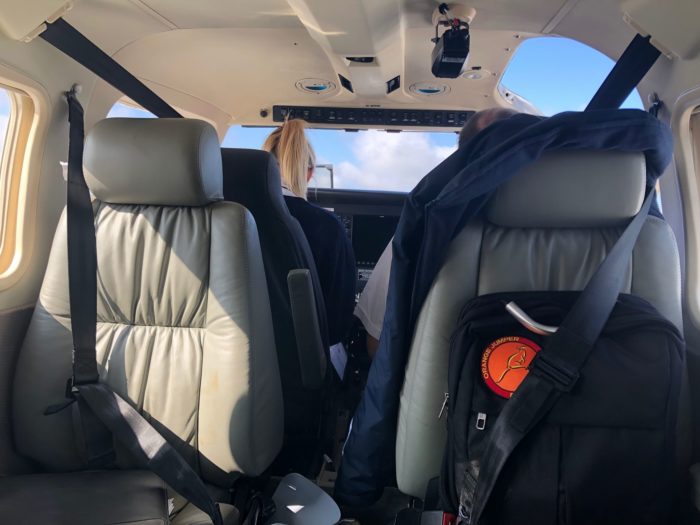
Part 2
Phoenix, Arizona!
The 3rd of January 2019 marked the first day of my adventure out to Phoenix, AZ. I set foot into Heathrow’s Terminal 3 apprehensively awaiting to board the A330 that would be taking me to America, where I would be living for the next 6 months. It was a day full of mixed emotions!
Excitement for the journey ahead, sadness for the loved ones I would be leaving behind and also relief that all the hard work, time and effort that went into the last 7 months had been made worthwhile. After a long journey and two flights we were in Phoenix- WE HAD MADE IT! The uniform was back on, smiles all around and a few squints in the sunshine. What an exciting start to the new year and an amazing adventure ahead.
After meeting my instructor, buddying up with my flying partner and having been shown around the school I was ready to get airside and even more importantly airborne. My first mission was in the Piper Archer on the 15th January with my instructor and flying partner sat in the back. Headsets on, radios checked, engine started and pre-flight checklists completed we were good to go. I remember so clearly lining up on the runway and shortly after, receiving our take off clearance. My instructor set full power and we started accelerating down the runway (meanwhile my smile was just getting bigger and bigger). The feeling of finally getting airborne and thinking this is what I’m going to be learning to do was indescribable.
Before I knew it all the basics I had been learning such as straight and level flight, climbing and descending turns and stalls had morphed into circuit lessons and I was working towards going SOLO! With only a few missions under my belt I was learning to perform the take-off, fly the aeroplane and land the aeroplane all on my own. Just short of 20 hours later I had my first flying exam on the 1st March. The progress test was the first time I would be flying with someone other than my instructor and acting as pilot-in-command.
The exam itself consisted of me going into school to plan for the flight by myself. I had to make a sensible decision and determine whether the aircraft was fit to fly and if the weather was suitable for the flight. Once I had completed all my flight planning, I met my examiner. The examiner asked me to brief him on the weather, relevant NOTAM’s, mass and balance and the aircraft’s performance. After my briefing I was then asked a series of theoretical questions about the aircraft type, aircraft documents, airspace, and FAA regulations. The briefing was completed with the examiner going over what I was to expect during the exam and what he was looking for. Shortly after I headed out to the aircraft nervously waiting for the examiner to come out and join me.
Once both seated, I began to set up the aircraft with the appropriate checks and completed the necessary checklists. I contacted the ground frequency and received clearance to taxi. I remember my feet trembling on the rudder pedals as I released the parking brake but once we started moving, I settled into the seat and started to feel much more comfortable. The exam consisted of me demonstrating a series of circuits with various different approach and landing configurations. I had to perform a normal circuit, a flapless circuit and a glide approach to simulate an engine failure. Five to six circuits later we came in for a full stop landing, taxied back to the ramp and parked the aircraft.
When exiting the aircraft my examiner turned around and said, ‘by the way Ellie you’ve passed’ and my response was ‘you are joking? Thank you so much, please can I hug you?’, to which he responded, ‘no I only hug my wife when I have to’. I couldn’t help but start laughing as a few tears of happiness rolled down my cheeks. He debriefed me thoroughly after the flight and highlighted areas which were good, areas which needed slight improvement and then wished me good luck for my solo!
The following day I met my instructor in the morning, and we went flying. I did a few circuits with her before coming back into land for a full stop. Once on the ramp my instructor got out of the aircraft and secured me in (on my own) ready for my first solo circuit! I started the aircraft up for the first time on my own, whilst she sat on the sidelines with a radio monitoring me. Nine other cadets came out to sit alongside her and to support me. I completed all my pre-flight checks very thoroughly and then got my clearance to line up and wait at the runway threshold. I remember so vividly lining up and then looking across to my right-hand side and the seat being empty. It was a rather strange feeling to not see my instructor sat next to me and being in the plane on my own! I set full power and watched the speed advance before positively rotating. The tower spoke to me as I turned crosswind, downwind, base and then onto final. I got my clearance to land and I could feel my heart rate increasing. I stayed focused, monitored my instruments, my visuals outside and then came in to land. It was a rather light landing due to me being in the aircraft on my own, but I touched down, all three wheels firmly on the ground and applied a bit of back pressure on the control column…I had done it! I remember thinking to myself ‘I’ve just gone SOLO’. It was the quickest 5-6 minutes of my life and as soon as I was back on the ground, I wanted to do it all over again. As I turned back into the ramp, I could see all my friends, my instructor and a few other cadets that had joined clapping and cheering me on, what an incredible feeling. I genuinely can’t put into words how amazing it felt. I was so unbelievably proud of myself, amazed at what I had achieved and most of all extremely happy. It was such a rewarding feeling and one of the most memorable moments/biggest milestones in my aviation career.
As tradition at CAE after going solo you have to be thrown into the swimming pool in your full uniform to celebrate the achievement. The plan for my course was to wait for everyone to complete their solos and then we could all get thrown in the pool together. Some cadets had already gone solo and others were waiting for it to be scheduled. However, a few days later we all met around the pool with fellow cadets from other courses and got thrown into the pool fully dressed to celebrate. I’ve got to say being a fairly petite female it didn’t take long before the boys started betting on how far they could throw me across the pool!
The solo flights carried on being scheduled alongside of me being scheduled with my instructor for navigation flights. The nav flights were fun because it meant we managed to get out of the vicinity of Falcon Field Airport and travel slightly further around Arizona and see different settlements, features and landscapes. We also got the opportunity to see disused/abandoned airfields, private airports and uncontrolled airports. We also practised landing at other airports to develop a further understanding to runway lengths, widths, slopes and their perception when coming into land. Both me and my flying partner were keen to tick off as many airports as we could in the area and luckily enough our instructor was up for it to. This meant that our navigation and map reading skills were developing more by constantly flying to different locations.
These navigation flights were used as preparation for our PT2- progress test two. PT2 was another flight that was examined in order for you to be signed off on solo navigation flights. During PT2 you had to demonstrate a navigation, a diversion and all the associated calculations such as: timings on legs, fuel calculations and wind corrections. Furthermore, you had to perform a simulated forced landing, deal with a simulated engine fire or failure and join an uncontrolled airport circuit. Given that your PT2 was a success you were then scheduled for navigation flights on your own. The solo navigations started as 2 hour missions but then developed into land-aways where you would stop at another airfield, shut down, refuel and then fly back to Falcon Field.
Aside of my flying with CAE, at Falcon Field, as part of the training I had to complete a course in upset prevention and recovery training. This took place at another local airport called Gateway in Mesa and was delivered on the Extra 300L. The training was delivered by a company called APS and consisted of a short two day course. The first day was mainly ground school based with a flight in the afternoon and the second day consisted of two flights with classroom based training in between.
The main aim of the training was to put the aircraft into unusual attitudes or undesired states and then to learn how to be able to recover from them safely. We looked into some aviation accident history and reviewed how many of the pilots could have recovered if that had known how to. The course itself was very interesting and full of really insightful information. The theory and flights demonstrated a recovery technique of ‘Pitch, Roll, Power, Stabilise’. The instructors both on the ground and in the aircraft demonstrated this technique. We used it during unusual attitude recoveries, stalls, secondary stalls and spins. After the training I felt much more comfortable and confident about flying and still have the knowledge from the training with me today.
Back at CAE it was time for me to move onto learning how to fly at night. The syllabus for night flying was very minimal. I completed a three hour flight with my instructor and then went on to complete two solo night flights in the circuit. Before my first night flight I reviewed with my instructor some of the differences from flying during the day to flying at night- such as optical illusions. This was massively important because the visual references that kept us safe during our VFR flight training were no longer there. Therefore, we had to rely on our instruments more and less on our visual scan outside. Additionally, the technique for landing the aircraft was changed due to the visual references being lost and only the runway lights providing you with information as to where the runway is. Flying at night is a completely different ball game. I felt like Wendy out of Peter Pan flying over the lights of the city. Everything looked so magical and vibrant. I think night flying was one of my favourite memories that I brought back from Phoenix.
Shortly after completing my night flights I had an instructor change for the next phase of my flying training. The next phase was focusing on developing my instrument flying skills and understanding. IFR flying, unlike VFR, simulates your reference to outside or in some cases (such as being in clouds) means that your visual reference is lost and therefore, you need to rely on your instruments. There is a whole other skill set that is learnt during your instrument flying.
We learnt how to enter and fly holding patterns, how to navigate off various navigation aids and how to fly instrument approaches. The lessons were utilised to cover a variety of different instrument skills and to prepare us for our PT3. Progress test 3 was all instrument-based flying. It consisted of an instrument departure, VOR tracking and intercepting, taking up a holding pattern and flying an instrument approach procedurally. One of the approaches was to a go-around and the other was to land. We also had to demonstrate to the examiner recoveries from unusual attitudes and stall recoveries off our instruments. Having passed PT3 I was sent on my final mission on the Piper Archer, my cross-country qualifier. It was the last solo flight of my training at CAE and it had to cover a distance of 300nm and have two full stop landings made at two different aerodromes. After I had completed the cross-country qualifier, I was moved onto the twin engine aircraft for the last part of my flying training out in Phoenix, AZ.
The Seminole was the training aircraft used to prepare you for your Commercial Pilot’s License skills test- CPL. Every element of our flying training up to this point was then going to be transferred over to the Seminole and we were going to get examined on it. The aircraft itself was a nice conversion from the Piper Archer and it had similar systems and a similar layout. However, the Seminole had a second engine, fully feathering propellers and a retractable landing gear so there was a bit more to think about. We started from the basics and learnt the pitch and power settings for the aircraft, the landing technique and general handling of the aircraft. During our twelve missions we worked on general handling, stalls, circuits, navigation, simulated engine failures/fires and unusual attitudes. All which pieced together to make the exam profile of the CPL. On the 2nd July 2019 I passed my CPL out in Phoenix, AZ. It was one of the most nerve-racking days of my life which then turned into one of the best days! Obtaining my CPL meant that it was time to head back to the UK.

Part 3
IR, Oxford!
On Monday 5th August 2019 I returned to Oxford for the IR phase of my training. I returned from the USA with not only a sun tan but also a CPL. The feeling of walking back into the school where I completed my ground school with a CPL was amazing! The first thing on the agenda was to go straight to the ground school training office and see all my old instructors. The delight on their faces when they saw my return was heart-warming. All the hard work I had put in before Phoenix and during my time out there had been worth it. It was so rewarding to know that my achievements were not only something I was proud of but that they were proud of to.
The return to Oxford firstly consisted of a briefing week which gave me and the other cadets chance to familiarise ourselves with the airport, the aircraft type we would be learning to fly, the standard operating procedures, UK airspace and the RT. Before I knew it my first simulator session was on my schedule and the missions continued to keep coming. I developed skills from the basic general handling of the aircraft to holding procedures, NDB approaches and ILS approaches. The simulator really helped me to nail the foundations of instrument flying and started to build my confidence. However, the pace of the IR phase was by no means slow and steady. Every day and every mission we were building on top of what we had already learnt or learning something completely new.
We studied and practised flying radar vectored approaches, SRA approaches and DME arcs. Furthermore, we looked at the difference between both 2D and 3D approaches, also known as non-precision and precision approaches. We then developed a different skill set by flying alternative procedures such as an approach without a DME or an unserviceable glideslope. As the missions continued to pass the training continued to advance and we began to study another element called RNAV, also known as area navigation. This then became a part of our everyday training as did our NDB and ILS approaches. Towards the end of our training everything came together and during our flights we were performing the same procedures but just at different airports or in a different location.
Alongside of the IR studies we were also required to sit a RT exam in order to obtain our own radio license. This consisted of studying the CAP 413 and sitting both a written and verbal exam. The elements covered were: general understanding of radio terminology, replying to ATC calls correctly, performing various emergency calls and request calls.
The next exam that came along was PT5 which was a progress test for your instrument flying performed in the simulator. It was a short exercise which consisted of you maintaining control of the aircraft and flying it as accurately as possible with your instruments slowly failing on you. With PT5 passed the next hurdle was working towards PT6.
In preparation for PT6 and the IR the training focused on the elements we as cadets would be getting examined on.
This included:
- An instrument departure
- En- route entry into controlled airspace
- A 2D and a 3D approach- one of which must be procedural and the other can be radar vectored
- RNAV approach
- A hold and hold entry
- A single engine approach, go-around and landing
- An EFATO- simulated engine failure after take-off
- Diversion
- Two stalls- one base to final configuration and one final configuration
- Unusual attitudes off the partial panel
PT6 came around quickly and even with all the practise and familiarisation of routes the nerves still kicked in. Overall the mission went well, and I successfully passed which meant it was time to polish up on any uncertainties and work on things that could get better in time for the IR. The whole idea of PT6 is for you to basically do a practise IR under test conditions and for the examiner to sign to say that you are ready to take your instrument rating.
On the 25th October 2019 I passed my Instrument Rating and officially had a CPL/IR! My training at CAE Oxford was complete and all the hard work had been worth it. Now it’s time to hit the Boeing 737-300 simulator at Gatwick for my MCC/JOC training.
Part 4
MCC, Gatwick!
On Monday 11th November I started my MCC/JOC course down in Gatwick. MCC/JOC stands for multi-crew course and jet orientation course, so this combines the two courses together as one. The concept of the course is to introduce working as a crew and to enhance your understanding and development of CRM, along with introducing you to flying with jet engines.
Overall the duration of the course is 3 weeks. This is split into a week of ground school and two weeks of flying in the simulator. During the first week we spent the first two days focusing on CRM. We looked into the importance of good CRM, positive crew communication and decision making. We also looked at the effects of bad CRM and the consequences it can have. We reviewed the swiss cheese model, analysed the chain of events and then put it into use in real life scenarios. As a team we looked at some accident and investigation case studies. We picked out the errors that were made throughout the video and then when they all lined up, they resulted in catastrophe. However, if any one of those mistakes wasn’t made or was corrected the incident may have been prevented.
The following three days were then used to build a foundation to our understanding of the Boeing 737-300. We studied the details of the flight deck layout, it’s systems and instrumentation. We learnt how to calculate fuel planning, performance and mass and balance for the aircraft. Furthermore, we were taught how to brief during our flights and looked over some non-normal procedures. Ground school completed could only mean one thing… flying!
Each simulator session was split up into two sections- two hours as pilot flying followed by two hours as pilot monitoring. The first simulator session was purely a familiarisation flight which allowed us to put into practise the checklists, scan flows and radio calls we had been learning in the classroom. We then went on to do some general handling once airborne to allow us to get a feel for the plane and how to fly it. As the week went on, we were in the simulator every day for a four hour session with an hours brief and debrief either side.
As the days progressed so did the workload for the course. Within the first week we had covered:
- Take-off and landing profiles
- Non-precision and precision approaches
- SID’s and STAR’s
- Single engine approaches, go-arounds and landings
- Coupled approaches and manual approaches
- The use of the autopilot, auto thrust and flight directors
- Loading of the FMC and non-normal procedures
Having covered all these aspects I couldn’t believe that the main focus of the course was multi crew and jet orientation. The workload was rather overwhelming to say the least and the speed of the jet was twice that of the aircraft I had been used to flying so everything happened twice as fast. The biggest challenge was transitioning from a single pilot role to a multi-crew environment. I found it very easy to forget that the other crew member was there to help me not examine me. The concept of sitting in a jet simulator and making announcements to the cabin crew and passengers was everything I had been working towards over the past 18 months. So being in the final two weeks of my training really started to sink in.
The final week went on to consolidate previous lessons and also increase the flight deck workload to see how we managed our energy. We did some route flights where we got the chance to practise small electrical failures and hydraulic system failures. We also got the opportunity to practise rejected take-offs and consolidate our single engine handling. And finally we had a look at a rapid decompression and emergency descent.
Friday 29th November was my last mission and the final day of me being in my CAE uniform. I couldn’t quite believe how quickly the past 18 months had gone nor how much I had learnt in them! Flying school has been the most intense, enjoyable and rewarding experience and I am very fortunate to say that the memories and friends I will take away from it are for a lifetime.

How to enter a holding pattern?
How to enter a holding pattern? It’s a question which haunts anybody going through the instrument rating – ‘what hold entry are we going to make?’ But it’s not just a question for the instrument rating, in our professional flying careers we’re used to allowing the autopilot to select and fly the hold entry, but do we ever cross check it, or are we prepared to manual enter the hold if necessary?
The diagram we’re all familiar with shows the appropriate sectors for each of the 3 hold entries; direct, offset (teardrop) and parallel.
The Offset sector is a 70 degree segment from the inbound radial, the direct sector is 180 degrees from this 70 degree segment, and the parallel sector occupies the remaining 110 degrees.
Of course, prior planning is the safest way to ensure you make the correct hold entry. If you’re planning a flight to an airfield where you can expect to hold, take a look at the hold you can expect. Before departing, you can work out the various hold entry segments, or simply visit a website such as flight utilities which offers a depiction of the various segments based on data you complete.
Direct Entry
The direct entry is, of course, the most straightforward form of hold entry. Upon reaching the holding fix, simply turn onto the outbound course. Once you pass abeam the fix, start your timer for 1 minute, before turning inbound to track the inbound radial back to the fix.
Modified Direct Entry
If you’re still inside the Direct Entry sector, but the angle to turn outbound is looking quite tight, fly at 90 degrees to the fix in the direction of the hold for 15 seconds, before turning a further 90 degrees onto the outbound course. Once you pass abeam the fix, start your timer for 1 minute (wind corrected), before turning inbound to track the inbound radial back to the fix.
Offset/Teardrop Entry
The Offset Entry involves flying an outbound heading, which is offset by 30 degrees, before turning back to intercept the inbound radial. For a standard right hand turn hold, simply take 30 away from the outbound track. Once you pass over the fix, turn onto this new offset heading and fly for 1 minute before making a right turn to intercept the inbound radial back to the fix. For a left hand hold, add 30 onto the outbound track, and fly this for 1 minute before turning left to intercept the inbound radial back to the fix.
If you’re unsure on which way to turn, look at the hold depicted on the plate, and ensure that you’re always turning towards the protected side of the hold.
Parallel Entry
Upon reaching the fix for a parallel entry, simply turn onto the outbound heading of the hold, and fly this heading for 1 minute. After 1 minute, turn in the opposite direction to the hold onto a heading to intercept the inbound radial back to the fix. Once you reach the fix, remember to start turning back in the correct direction for the hold.
How to enter a holding pattern?
Completing an EASA FCL Logbook
Completing an EASA FCL Logbook: Pilot licensing regulations are being standardised across all member states of the European Aviation Safety Agency (EASA), including the UK. The EASA regulations have introduced a number of new pilot licences which are replacing licences issued by national authorities across Europe.
These licences are known as EASA licences or Part-FCL licences. Part-FCL is the main piece of European legislation introducing the changes.
The new EASA licence is governed by the EASA Part-FCL, and this document details a few differences to the old CAA Part-FCL we’re all used to – and have probably been basing our logbooks on.
When completing an EASA FCL Logbook, To ensure you’re not caught out when you make the transition, we’ve compiled the complete guide to completing your EASA FCL Logbook. You can read the full EASA PART-FCL document here.
General
- The record of the flights flown should contain at least the following information:
- (1) personal details: name(s) and address of the pilot;
- (2) for each flight:
- (i) name(s) of PIC;
- (ii) date of flight;
- (iii) place and time of departure and arrival;
- (iv) type, including make, model and variant, and registration of the aircraft;
- (v) indication if the aircraft is SE or ME, if applicable;
- (vi) total time of flight;
- (vii) accumulated total time of flight.
- (3) for each FSTD session, if applicable:
- (i) type and qualification number of the training device;
- (ii) FSTD instruction;
- (iv) total time of session;
- (v) accumulated total time.
- (4) details on pilot function, namely PIC, including solo, SPIC and PICUS time, co-pilot, dual, FI or FE;
- (5) Operational conditions, namely if the operation takes place at night, or is conducted under instrument flight rules.
Recording of Flight Time
- PIC flight time:
The holder of a licence may log as PIC time all of the flight time during which he or she is the PIC;
The applicant for or the holder of a pilot licence may log as PIC time all solo flight time, flight time as SPIC and flight time under supervision provided that such SPIC time and flight time under supervision are countersigned by the instructor;
The holder of an instructor certificate may log as PIC all flight time during which he or she acts as an instructor in an aircraft;
The holder of an examiner’s certificate may log as PIC all flight time during which he or she occupies a pilot’s seat and acts as an examiner in an aircraft;
A Co-pilot acting as PICUS on an aircraft on which more than one pilot is required under the type certification of the aircraft or as required by operational requirements provided that such PICUS time is countersigned by the PIC.
Co-pilot flight time: the holder of a pilot licence occupying a pilot seat as co-pilot may log all flight time as co-pilot flight time on an aircraft on which more than one pilot is required under the type certification of the aircraft, or the regulations under which the flight is conducted.
- Cruise relief co-pilot flight time: a cruise relief co-pilot may log all flight time as co-pilot when occupying a pilot’s seat;
- Instruction time: a summary of all time logged by an applicant for a licence or rating as flight instruction, instrument flight instruction, instrument ground time, etc., may be logged if certified by the appropriately rated or authorised instructor from whom it was received;
- PICUS flight time: provided that the method of supervision is acceptable to the competent authority, a co-pilot may log as PIC flight time flown as PICUS when all the duties and functions of PIC on that flight were carried out in such a way that the intervention of the PIC in the interest of safety was not required.
If the holder of a licence carries out a number of flights upon the same day returning on each occasion to the same place of departure and the interval between successive flights does not exceed 30 minutes, such series of flights may be recorded as a single entry.
Recording of PICUS Time
When an aircraft carries two or more pilots as members of the operating crew, one of them shall, before the flight commences, be designated by the operator as the aircraft PIC, according to operational requirements, who may delegate the conduct of the flight to another suitably qualified pilot. All flying carried out as PIC is entered in the logbook as ‘PIC’. A pilot flying as ‘PICUS’ or ‘SPIC’ enters flying time as ‘PIC’ but all such entries are to be certified by the PIC or FI in the ‘Remarks’ column of the logbook. All time recorded as SPIC or PICUS is to be countersigned by the aircraft PIC/FI in the ‘remarks.’
Instructions for Completion
Flight crew logbook entries should be made as soon as practicable after any flight undertaken. All entries in the logbook should be made in ink or indelible pencil.
Flight time is recorded:
For helicopters, from the moment a helicopter’s rotor blades start turning until the moment the helicopter finally comes to rest at the end of the flight, and the rotor blades are stopped.
For airships, from the moment an airship is released from the mast to taking off until the moment the airship finally comes to rest at the end of the flight, and is secured on the mast.
Enter the place of departure and destination either in full or the internationally recognised three or four letter designator. All times should be in UTC.
Total time of flight may be entered in hours and minutes or decimal notation as desired.
Recording FSTD Time
The EASA PART-FCL Logbook includes entries for Simulator flying alongside actual aircraft time.
For any FSTD enter the type of aircraft and qualification number of the device. For other flight training devices enter either FNPT I or FNPT II as appropriate.
Total time of session includes all exercises carried out in the device, including pre- and after-flight checks.
Enter the type of exercise performed in the ‘remarks’, for example operator proficiency check, revalidation.
Looking for an easy solution?
LogTen Pro X is the world’s most advanced pilot logbook software for iPhone, iPad, and Mac. Designed to take full advantage of the latest operating systems and Apple hardware, LogTen Pro X is so much more than your logbook.
From super fast flight logging with our Fly Now feature, to detailed analysis of your flight time with the Analyze view, to the fantastic Time Loupe that lets you view your currency and limits at any moment in time, past, present, or future.
And, most importantly, Logten Pro X is able to produce an EASA PART-FCL logbook based on the data you enter.
Sources: CAA, EASA PART-FCL
We need to talk about women in aviation
Writer: beyondtheflightdeck
We need to talk about women in aviation: I was stood at the airport Lost & Found, explaining for the third time to the lady behind the desk that I wasn’t sure when I lost my sunglasses, although I knew they disappeared after an evening flight some point last week, and that I had definitely left them in the flight deck of the aircraft. I had flown almost 400 passengers that day, and I had visited the Lost and Found office as soon as I had finished my duty, so I was standing in full pilot uniform, with my wings and First Officer stripes on my blazer. The lady apologised that she didn’t have anything that matched my description, and then proceeded to ask if I enjoyed being Cabin Crew.
I’m often perceived to be cabin crew by various members of the general public, and it still continues to bewilder me, especially when I’m stood there in uniform. Although I understand that being a female pilot is uncommon, it frustrates and frankly saddens me that your average Joe Bloggs’ preconception is that a woman in uniform at an airport can only be cabin crew. Although I have been lucky enough to never receive any negativity from any passengers onboard any of my flights, (excluding a few drunken jokes from a stag party regarding being able to fly, but could I park the aircraft!) it’s clear that there’s still a long way to go until women are equal in aviation.
I started my journey to becoming a commercial pilot when I was 11, when I joined my local gliding club in the North East of England. I have always been aware of the tiny percentage of women pilots out there; at the time the club had about 100 active members, and I remember 4 being women. This trend continued on into my initial commercial flight training, where the course prior to mine had no women training at all.
Although various airlines have begun to made an effort to publicise that fact that girls can fly too, a recent study by British Airways suggests that only 3% of pilots are women. I strongly remember reading this figure 10 years ago when I first had my heart set on becoming a pilot, why hasn’t it increased at all? Why are so few women becoming pilots?
British Airways’ study continued to show that women said they didn’t think of flying as a career due to a lack of visible role models, and because they were told it “was a man’s job”. In the same poll, 20% said that whilst growing up they only saw men featuring as pilots on TV and film, and another 20% also said they thought women could only be cabin crew. Another publication, Absent Aviators: Gender Issues in Aviation, mentions a study conducted by Deanna Gibbons, a sociologist and member of the Royal Australian Air Force, which concludes that young girls view flying as difficult, dangerous, and “more of a man’s job.”
Gibbons’ study also showed that girls which became either commercial or military pilots experienced an early association with flying, something Gibbons labels “an epiphany moment.” These were triggered by direct exposure to flying: either a cockpit visit during a commercial flight, watching aircraft take off from an airfield, or taking a joyride on holiday. Most women interviewed experienced their epiphany moment between the ages of 5 and 10, with their childhood experiences inspiring actual hands-on flying experience during the girls’ teenage years. The women participating also described themselves as having “aviation-obsessed” fathers who encouraged their interest, although the fathers were only rarely pilots themselves.
I found this study particularly interesting, as my first memory of wanting to become a pilot was after a conversation with my own father, during a late night conversation where I asked “Daddy, what did you want to be when you were little?”, rather than requesting the usual bedtime story. From then I became determined that I would fly for a living, with a visit to the gliding club when I was 10 to request to become a member. I was told that I was still slightly too young, and if I was still interested to come back in a years time. I was 11 when I had my first flight in a glider, and it sealed the deal. I had the ‘aviation bug’, and I was hooked. I continued to fly at the club, went solo shortly after my 16th birthday, and started my PPL just before turning 17.
There’s a famous Da Vinci quote that is often mentioned by pilots when asked about their love for flying:
“FOR ONCE YOU HAVE TASTED FLIGHT YOU WILL WALK THE EARTH WITH YOUR EYES TURNED SKYWARDS, FOR THERE YOU HAVE BEEN AND THERE YOU WILL LONG TO RETURN.”
For me, that’s exactly how I felt after my first flight. If more young girls could have the opportunities I was lucky enough to have, would I now be flying with more female pilots?
If women in aviation were more widely talked about, approachable, or if girls were encouraged to like planes just as much as boys are, would the general public be more accommodating towards female pilots? Would parents then be more encouraging of their little girls with an interest in flying, aeroplanes or travel, rather than letting them grow up with the impression that they only can become cabin crew?
Normally when children visit the flight deck they stand quietly in awe of all the lights and buttons, whereas a little girl visiting recently was unable to do anything stare at me in the First Officer’s seat and repeatedly say, “but, you’re a girl!”.
For a long time, maybe naively so, I often thought that women just simply didn’t have an interest in aviation. Any hurdles I’ve personally had in becoming a pilot are similar to the ones that my male colleagues that have also experienced; and I’ve been lucky enough to fly with some fantastic pilots during my relatively short time in the air, with the general consensus from my colleagues being that they don’t care about the gender of their co-pilot as long as they can do the job properly! The aviation industry is clearly hoping to encourage women to follow in the steps of women such as Amy Johnson (the first British woman to fly solo from Britain to Australia), with initiatives from British Airways and easyJet looking to encourage more women to consider becoming a pilot.
However, I feel that it’s obvious that there’s still a long way to go until it’s not unusual to hear a female voice on the PA on a flight. I’m hoping with the increase of female pilots in the media, and efforts from airlines in the UK, dreaming of becoming a pilot won’t seem like such an obscure and unattainable career choice for young girls. During my short time flying commercially, I’ve been lucky enough to fly with another female colleague, and I hope to fly with many more throughout my career. I feel like the luckiest girl in the World to be living my childhood dream, and what other job are you able to be paid to travel, meet interesting people everyday, and spend hours looking out the window?Learn more about beyondtheflightdeck, or read more of her articles at beyondtheflightdeck.com.
Everything you need to know about a JOC/ MCC/ AQC
Source: CTC, CAE OAA, flightdeckfriend
Everything you need to know about a JOC/ MCC/ AQC. MCC Multi-Crew Cooperation course (MCC) Multi-Crew Cooperation course (MCC) gives students realistic training in operating a multi-pilot, multi-engine airplane under IFR conditions. The objectives of the course are to train the optimum decision making, communication, diversion of tasks and use of checklists, mutual supervision, teamwork and support through all stages of flight under any conditions.
The MCC Course has been designed to train single seat pilots in the team skills necessary for the safe operation of complex, multi crew, jet aircraft. During the course you will be introduced to the competencies necessary for this demanding transition. The training will take place throughout all phases of flight under normal, abnormal and emergency conditions. This course meets EASA requirements.
COURSE CONTENT
◦ Communication
◦ Leadership and Team Working
◦ Situation Awareness (Threat and Error Management)
◦ Workload Management
◦ Problem Solving and Decision Making
◦ Monitoring and cross-checking
◦ Task-sharing
◦ Checklist handling
◦ Briefing Techniques
◦ Flight Management
◦ Use of Flight Management Computers
◦ System Normal Operations
◦ Abnormal and Emergency Operations
◦ Environment, Weather and ATC
The theoretical areas of the course are closely integrated with the syllabus content of the simulator sessions.
JET ORIENTATION COURSE (JOC)
The JOC is a stepping stone for students with an MCC certificate but no jet handling experience. It has been designed to bring them up to the same standard of handling as an MCC/JOC student and should be viewed as a preparation course for an airline simulator assessment. For many airlines the completion of a JOC is a mandatory prerequisite to the pilot selection process.
Combined JOC/MCC
Having successfully passed your Commercial Pilots Licence (CPL), Multi-Engine Piston (MEP) Class Rating, and Multi-Engine Instrument Rating (ME/IR), the step is to complete the Multi-Crew Cooperation (MCC) course. Designed specifically to prepare you to work as part of an effective flight crew, the MCC is a mandatory requirement on your journey to becoming a First Officer.
The Jet Orientation Course (JOC) builds on the MCC providing you with a much greater insight into how you operate airliners and the expectations that airlines have of you. A combined MCC/JOC gives you the best chance of getting your first airline role.
AQC – with CTC
The AQC is a crucial step in the development and training of an airline pilot. The course takes you beyond the JAR-FCL MCC syllabus – incorporating airline standard Initial CRM, MCC and Advanced Handling Skills – making you familiar with all the skills you will need to operate today’s advanced jet aircraft in a multi-crew IFR environment.
You already know that if you are applying for a Type Rating on a multi-pilot aircraft, you need to complete a JAA approved course of training in Multi-Crew Co-operation.
CTC Airline Qualification Course (AQC) is the most comprehensive generic bridge training course available. AQC provides full airline preparation and skills development, delivered to the highest airline standards and providing clear demonstration of your abilities and your potential. AQC gives you the edge for a career in the increasingly competitive world of commercial aviation.
CTC Aviation’s industry-renowned Airline Qualification Course is an advanced Multi-Crew Co-operation/Jet Orientation Course (MCC/JOC); An airline focused bridging course designed to fully prepare you for airline pilot operations in a commercial, multi-crew environment.
Those with existing and proven MCC training to CTC Aviation’s approved standard have the opportunity to join a shorter AQC designed to complement your previous training and/or operational experience.
Following selection, CTC Aviation will invite you to enrol upon either the full AQC or a ‘fast track’, reduced-cost course, reflecting your experience to date.
Those meeting the required standard on completion of training will be put forward for First Officer placement opportunities with one of CTC Aviation’s growing list of Airline Partners.
Key features
1 World renowned Airline Qualification Course delivered on Boeing or Airbus simulators at CTC Aviation’s Crew Training Centre – Southampton
2 Unique CTC ATP Performance Protection
3 Unrivalled airline placement opportunities *
4 Airline Preparation Day – expert guidance from CTC Aviation’s selection team on how to present your CV and prepare for airline selection
5 Accommodation included for duration of the course
6 Option to complete a simulator refresher course
7 Potential access to funding subject to eligibility**
8 Simulator refresher option avialable
Subject to meeting CTC Aviation and Airline Placement Standards **Terms and conditions apply
Flight school Interview preparation
Flight school Interview preparation, So you’ve booked yourself an assessment? Congratulations, its the first step in realizing your dream! For the most part, all the major fight schools in the UK and Europe will all be looking for the same things – Motivation and Ability.
They do this in different ways, but with the larger flight schools, this is commonly done on an “assessment day” which aims to test all your motivation and natural ability. So how do they do this? The assessment days commonly involve 3 or 4 distinct segments: The interview, the team exercise, the computer assessment and occasionally the sim check.
Flight school Interview preparation: The interview: The interview gives a chance for you to show off some of your ability, however, this is mainly time for your motivation to shine through. The interview will typically be split into two sections – the motivation section and the competency section. There are commonly two interviewers and they will ask a section each whilst the other makes notes. The motivation section is exactly what it says – why do you want to be a pilot and do you have the motivation to get you through the next 18 months of hard work and into the right-hand set of an airliner? They will also be probing you here for knowledge of the flight school, the industry and the airline if you’re going for a sponsored scheme – so do your research, there’s nothing worse than not knowing the basics!
The competency-based section is slightly different – the interviewer will be asking you for examples of when you have behaved in certain ways and shown desirable attributes – Leadership, good teamwork, good communication, the list goes on. How do you answer these questions?
What they are looking for is really to be told a story, set the scene, explain what happened, your actions and how they had a positive impact. When you’re preparing these answers for your interview to remember one thing – the interviewer will have been sitting through this same interview several times that day and possibly hundreds of times in the past weeks, so make your answers interesting and memorable – preferable for the right reasons!
Prepare yourself for this section giving yourself a handful of good examples where you have displayed desirable attributes, you will find that some stories can be tweaked to cover several different questions – perfect. Don’t fall into the trap of thinking that you will wing it on the day because you’ve got some examples in your head, you won’t, the interview is all about preparation and it really shows. Write them out, edit them, read them to yourself then get someone to interview you – its unbelievable how much harder it is to get it all out right when you’re put on the spot, but if you get the preparation in, it will really show.
Flight school Interview preparation: The team exercise: As a pilot 99.9% of the time you will find yourself working alongside someone else, therefore good teamwork skills are essential. The team exercise is your chance to show off these skills and show you work well with others.
Lots of people go into this part of the assessment thinking they need to dominate the task and take the lead – this couldn’t be more wrong. Taking over the exercise will get you noticed for all the wrong reasons, the task is a team exercise, not an individual one. So what are the assessors looking for?
Including everyone – is there someone who is being quiet and not getting their opinion or view across in the task, bring them in and ask them what they think. Clarifying ideas – getting others to expand and build on their ideas. Encourage others – be positive, and encourage ideas rather than putting down ones you don’t agree with. Original ideas – the assessors will want to see you playing your part in the exercise. Delegating tasks – sometimes the exercise requires several tasks to be achieved at the same time or in a short space of time, locating these tasks effectively and sensibly is important. Lots of people also worry about failing to complete the exercise, don’t worry, its how you work as a team they are interested in.
The Computer Assessment: If you are reading this then I’m sure you have done your research – there are practice versions of almost all the latest computer aptitude tests used by the big flight schools available online, some of which may require a fee. Are they worth it? In my opinion, yes, they are. The aptitude tests are designed so you shouldn’t really be able to “practice” them – you either have the skills to do well in them or you don’t. I agree totally, however, I believe that having seen something similar and had a go on the practice software gives you a noticeable advantage over someone who hasn’t – you’ve seen it before. This is going to help you go into it feeling more relaxed and confident as you know exactly what to expect.
The Sim Check: The sim check is primarily used to confirm and verify the findings of the computer-based testing – a more practical application of capacity, hand to eye coordination, ability to learn new skills and many other things. As the computer-based testing is becoming more and more reliable and accurate, the sim check is becoming less and less common – sim time is often short and extremely valuable so why use it up if its not absolutely necessary? If you do go for a sim check, don’t panic, they’re not expecting miracles here! No previous experience required as its all very basic – its actually great fun!
If you want any guidance or more in-depth information on any of the above or any flight school-specific questions, please don’t hesitate to get in touch with us at: enquiries@aviationinsider.co.uk
Good Luck!
